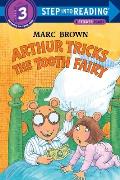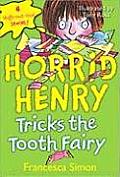The Whole Tooth and Nothing But
In last Sunday’s New York Times a frustrated parent (who on second look I find is my college classmate Bruce Feiler) laid into the tooth fairy tradition:
I don’t think my brother and I ever saw more than small change from the tooth fairy back in the 1970s. Nowadays the idea of putting a dime or quarter in a child’s bed probably seems ridiculous. And what if she swallows it in her sleep and chokes?!
Over the centuries, many cultures developed rituals to mark children’s loss of their deciduous teeth, which usually begins around 5 or 6. In some societies, witches were believed to covet discarded teeth for spells, so proper disposal was paramount. Children have variously tossed their teeth onto the roof (Vietnam, Haiti), buried them with ancestors (New Guinea), fed them to mice (Mexico, Afghanistan) or even burned them.I can’t imagine that inflation has made this ritual any easier for parents. This year’s Visa survey of how much money the tooth fairy leaves per tooth found that the national average is $2.60. (In trying to calculate the median, I discovered that the proffered numbers on how many children receive what amount add up to only 82%, so who knows?)
Americans were the first to popularize the idea of a tooth fairy early in the 20th century, though the custom did not become widespread until the 1950s, according to research by Rosemary Wells, a dental lecturer who lived in Chicago. American parents introduced two wrinkles to the age-old ritual, neither one for the better.
First, in the prosperity-obsessed climate of the 1950s, the tooth fairy began compensating children with cash for the alleged trauma of losing a tooth. Leave it to Americans to debase a perfectly good 3,000-year-old tradition by making it all about money.
Second, and even worse, while nearly all cultures mark the falling out of the first tooth, Americans extended the ritual to cover every tooth, a number that usually reaches 20. These days, losing a tooth is not a quaint right of passage, it’s the Ironman triathlon of parental obligation.
I don’t think my brother and I ever saw more than small change from the tooth fairy back in the 1970s. Nowadays the idea of putting a dime or quarter in a child’s bed probably seems ridiculous. And what if she swallows it in her sleep and chokes?!




1 comment:
In the very non-"prosperity-obsessed climate" of the early 1940's, the tooth fairy appeared faithfully in southeastern Pennsylvania and left shiny dimes under my pillow. It was astonishing and delightful. And, given that datum, I tend not to get excited about Mr. Feiler's opinion that the tooth fairy practice is a horrible post-1950's exemplar of some things he doesn't like. He may indeed not like them, but they are not the tooth fairy's fault.
Post a Comment